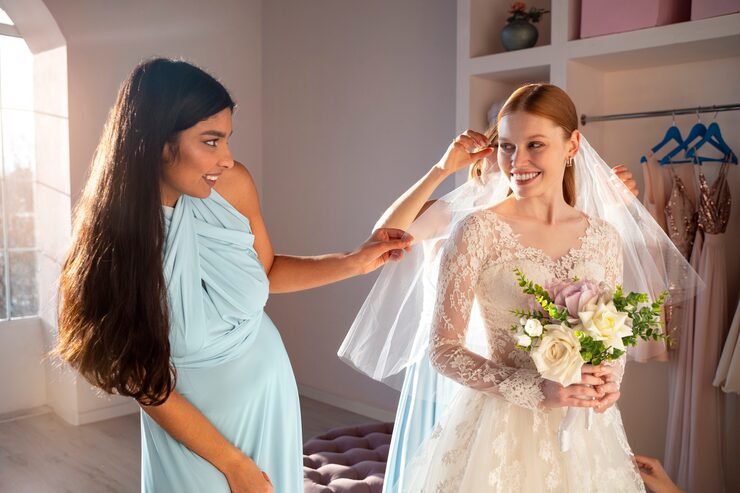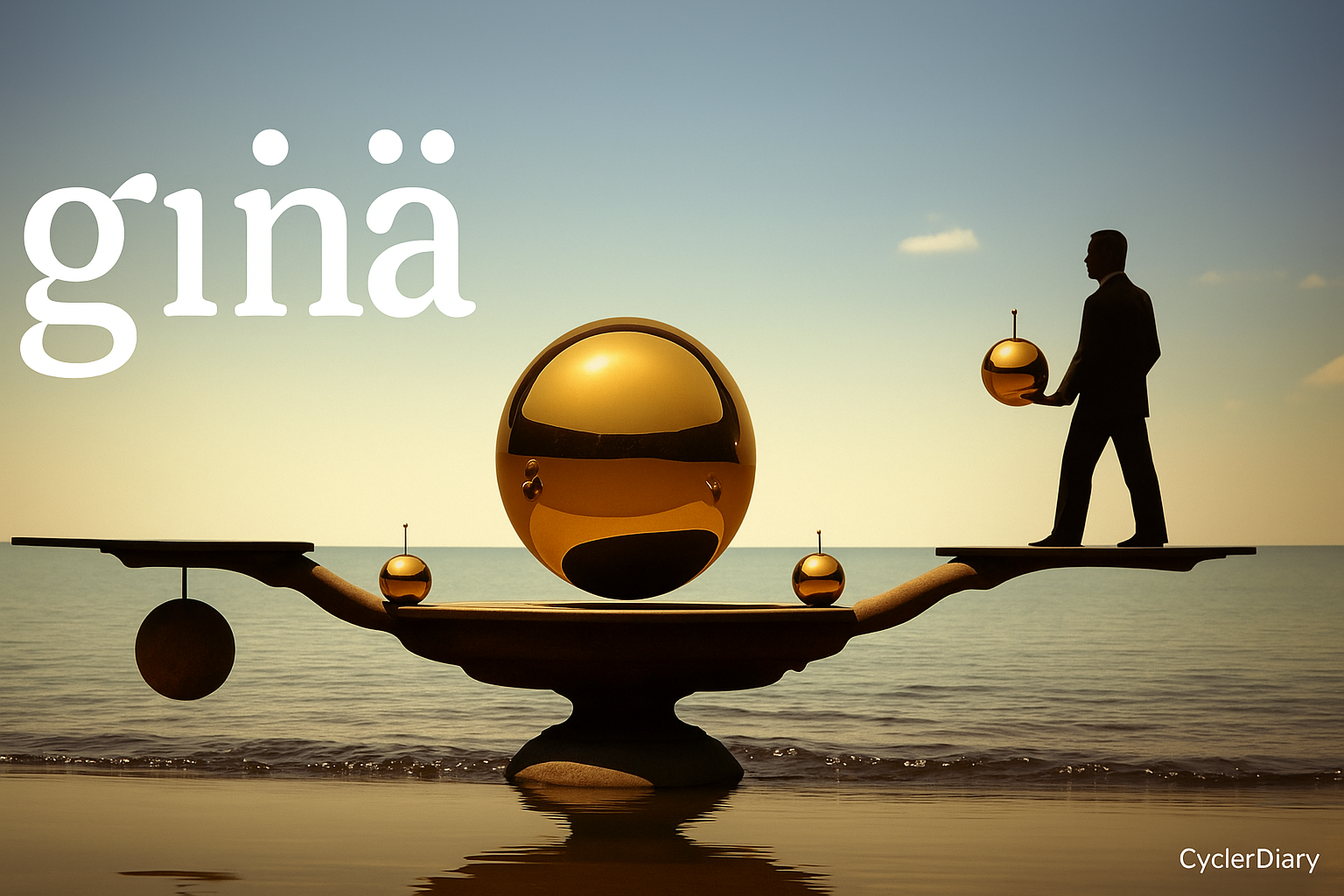A wedding veil can mean many things depending on where you are in the world. For some, it marks purity and tradition. For others, it brings good luck, protects against spirits, or symbolises family honour. What once felt like a rule has now become a choice, with brides deciding how a veil fits into their day. Long or short, plain or detailed, each style carries meaning and memory.
Here, you’ll find how wedding veils connect history, culture, and modern expression, showing why they remain one of the most recognisable parts of a wedding day.
The Origins of Wedding Veils
The history of the wedding veil is complex, shaped by cultural beliefs, religion, and fashion. In ancient Rome, brides wore a flame-coloured veil known as the flammeum to shield themselves from evil spirits. In Greece, veils were used in a similar way, seen as protective garments to keep bad fortune away from the marriage.
Over time, veils moved from superstition into ritual. In Christian Europe, they took on strong associations with purity and chastity, aligning with religious expectations of brides. The act of covering the bride’s face also highlighted her modesty and submission, values that were highly regarded in earlier societies.
By the Victorian era, the veil had shifted from a strictly symbolic garment into a statement of wealth and fashion. Queen Victoria’s choice of a white gown and veil for her 1840 wedding to Prince Albert set a trend that influenced brides across Europe and beyond. From this point, veils became closely tied to bridal fashion and social aspiration, a role they still play today.
Western Wedding Veil Traditions
In Western customs, veils have carried layers of meaning. Their colour, length, and use in the ceremony each tell part of a wider story.
Purity and chastity
The white veil, paired with a white gown, became a standard image of purity in Christian weddings. It reflected expectations of innocence and moral conduct. Though society has changed, this symbolism still shapes how many people see the bridal veil.
The father’s role
In many Western ceremonies, the bride’s father lifts the veil before handing her to the groom. This act symbolises the father’s formal role in the marriage process and the traditional concept of “giving away” the bride.
The groom’s role
Another familiar custom is the groom lifting the veil before the kiss. This simple moment carries strong meaning: the unveiling marks the transition into married life and signals the couple’s new beginning together.
Fashion and identity
Since the 19th century, veils have also been seen as central to bridal fashion. Cathedral-length veils became popular in royal and aristocratic weddings, while shorter designs appealed to brides seeking practicality. Today, the Western bride can select from countless styles, from minimal sheer veils to ornate lace designs, showing how fashion has widened choice while still preserving traditional associations.
Asian Wedding Veil Traditions
Veils in Asia differ widely, shaped by religion, history, and regional practice. In South Asia, the dupatta or ghunghat is a key part of bridal attire. It is often richly embroidered, draped over the bride’s head, and used in ceremonial moments, such as the couple’s first prayer together. The covering is both decorative and symbolic, representing modesty and respect.
In China, brides have long worn red veils, linked to good fortune, prosperity, and joy. Red is considered the most auspicious colour, and covering the face until the ceremony highlights the sense of mystery and celebration. The unveiling, usually by the groom, is a moment that signals the formal start of married life.
In Islamic traditions across the Middle East and parts of Asia, the veil can take different forms. Some brides wear a hijab or niqab that reflects religious values of modesty and devotion, while others wear an additional decorative covering during the wedding itself. These practices vary by country and family but remain deeply connected to faith and cultural expression.
Modern Customs and Interpretations
In recent decades, veils have shifted from obligation to personal choice. Brides are no longer bound by strict rules and instead decide how a veil fits their ceremony. For many, it is an opportunity to honour family or cultural heritage, while others choose it purely for style.
The world of modern wedding veils reflects this freedom. Brides can select from countless styles, from cathedral-length pieces that create drama to shorter birdcage veils that echo vintage fashion. Materials range from soft tulle and lace to embroidered fabrics, often customised with personal details such as initials, motifs, or even colour. This variety allows brides to shape a look that feels meaningful without being restricted by tradition.
Some also see the veil as a symbolic bridge between past and present. Wearing one can feel like a tribute to generations before, even when styled in a contemporary way. For example, a bride may wear her mother’s veil but update it with new embroidery or a different headpiece, creating a link across time while making it her own.
Regional Variations and Unique Practices
Although many traditions share common themes, each region has distinct customs. In some cultures, the veil is lifted by the groom at a key moment, while in others it is never removed until after the ceremony is complete. Some families view the veil as a sacred garment, while others treat it purely as a fashion choice.
In Latin American weddings, the mantilla veil is a striking feature, worn flat against the head with ornate lace framing the face. In Japan, traditional brides may wear a tsunokakushi, a white hood designed to cover the bride’s “horns of jealousy” and symbolise obedience and harmony in marriage. These variations show how veils continue to adapt while preserving deep cultural meaning.
FAQs
What is the oldest known use of wedding veils?
The earliest veils appeared in ancient Mesopotamia, where brides covered their heads in marriage contracts. They signified status, honour, and protection, reserved only for women of higher social classes.
What materials are most commonly used for wedding veils today?
Wedding veils are commonly made from tulle, lace, organza, or silk. Tulle is the most popular for its light feel, lace adds tradition, and silk or organza offer a luxurious look. Fabric choice usually depends on comfort, dress style, and the overall effect a bride wants.
Why do some brides choose coloured veils instead of white?
Coloured veils are often chosen to reflect cultural traditions or personal style. For example, red is common in Chinese weddings for luck, while gold or green may appear in Middle Eastern ceremonies. In Western weddings, coloured veils can express individuality, contrast the dress, or honour a family tradition.
Are wedding veils always linked to religion
Veils are not always religious. Many brides wear them as fashion statements, for family tradition, or to create a dramatic entrance, with meanings differing by culture and personal choice.
What is the cultural meaning of lifting the veil?
Lifting the veil symbolises different things across cultures. In Western weddings, it reveals the bride to the groom, while in others it marks key rituals like completing vows. The act generally represents transition into marriage.



